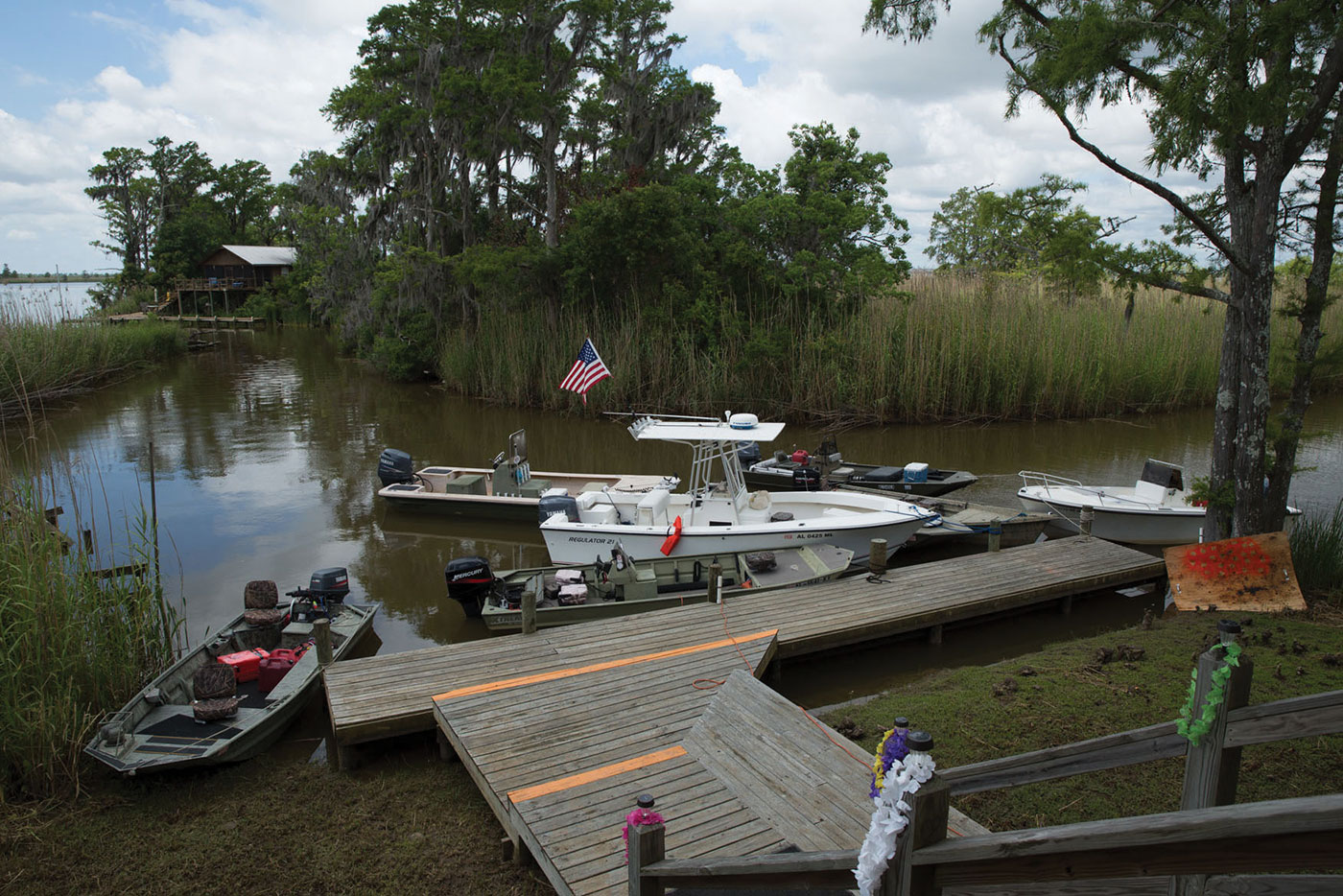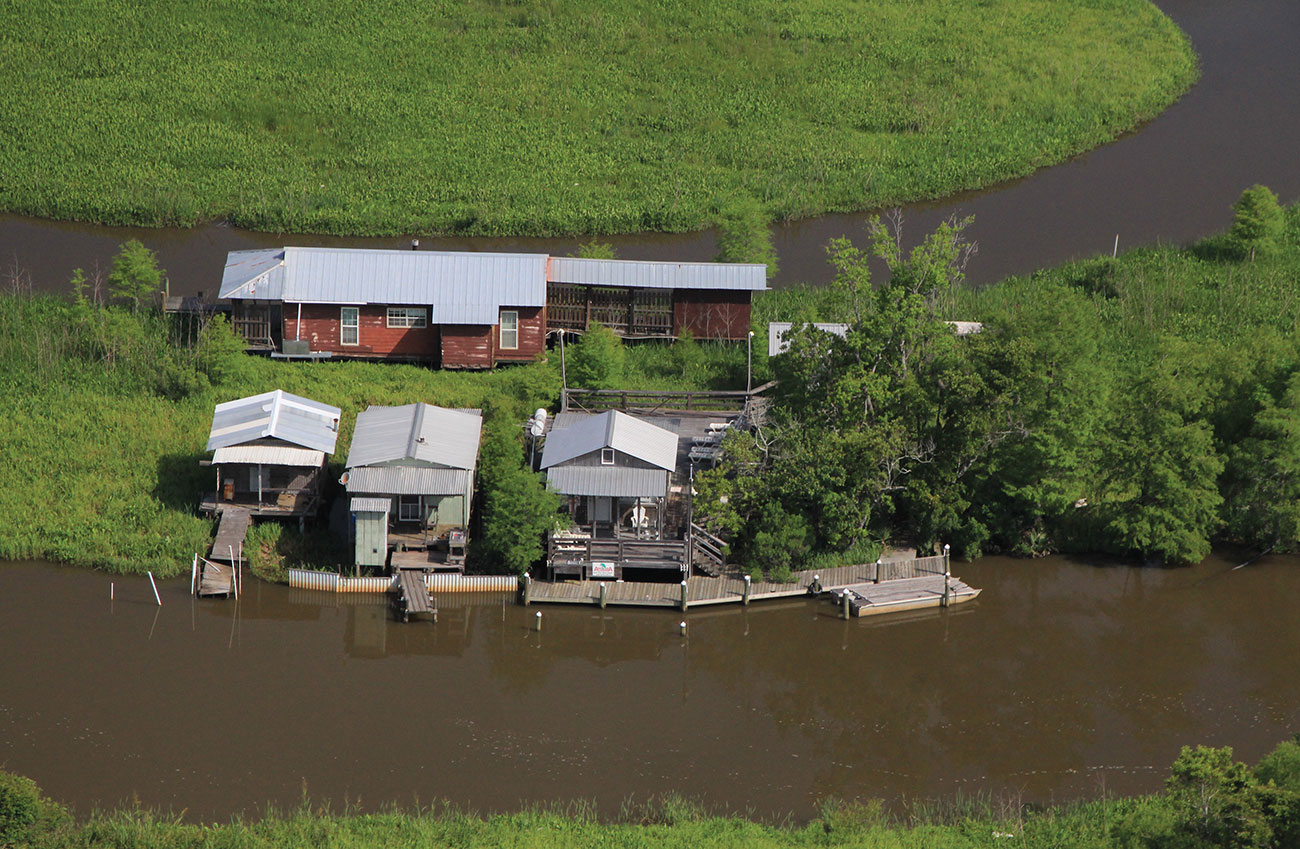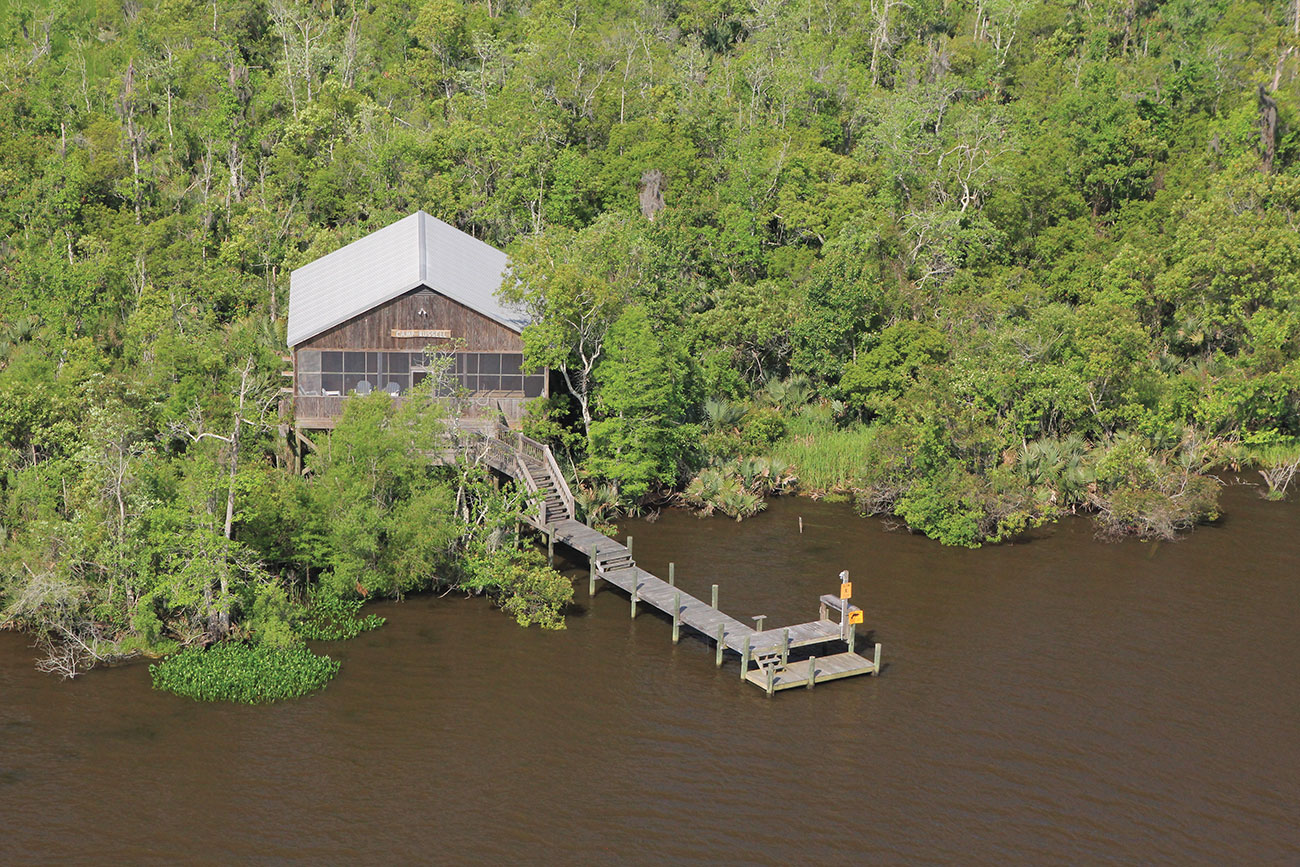
Humans have always been drawn to the remote, and Mobilians are no different. For generations, the Mobile-Tensaw Delta has attracted countless adventure-seekers to its other-worldly landscape just beyond the city’s reach. It’s a touch of wilderness in our collective backyard; in many places, you can even see the city’s skyline.
But without the assistance of a watercraft, the Delta and its maze of creeks, muddy banks and stilted camps remain inaccessible to most. This photo essay pulls back the curtain on this rarely seen world north of the Causeway and the isolated camps that dot its swampy landscape.

“A delta camp requires constant maintenance simply due to its exposure to the elements. There’s also the issue of settling — the Delta wants to swallow everything back into the mud.”
Jim Brown, member/head of construction and maintenance of Camp Gordon



“It’s definitely an escape, and the sheer beauty of the Delta — it’s like nowhere else. It’s so quiet in the mornings, and then you get the most gorgeous sunsets. And of course, there’s the camaraderie part of it, being out there with all of your buddies. I wouldn’t say it’s ‘lawless’ up there, but you can definitely hang loose.”
Will Cooksey, member of a camp called the Stagger Inn

Camp Names We Love
The Stagger Inn
Runamuck
Cypress Knee
Raft River Hilton
Kittyhawk
AcunaMatada
Hard-Knock Café
Delta Shelta
Isle Mirada
Camp Hog
Delta Dream
Stumpknocker
Bull Frog
Roll Tide
Stud Duck
Whiskey Breath
Soggy Bottom Goggle Eye

Aerial photos and video are provided by Sam St. John, flying in support of the preservation of Alabama’s Coastal Resources, Alabama Coastal Foundation, Mobile Baykeeper, Mobile Bay National Estuary Program, Dauphin Island Sea Lab, Alabama Mississippi Sea Grant, Alabama Department of Environmental Management, US Corps of Engineers and many others as a non-profit mission to protect the environment in which we live and work.
The aircraft utilized is a Savannah light sport aluminum plane with amphibious carbon fiber floats. The aircraft is capable of maintaining level flight speeds between 25 and 95 mph and takeoff and landing on land or water within 150 feet.





